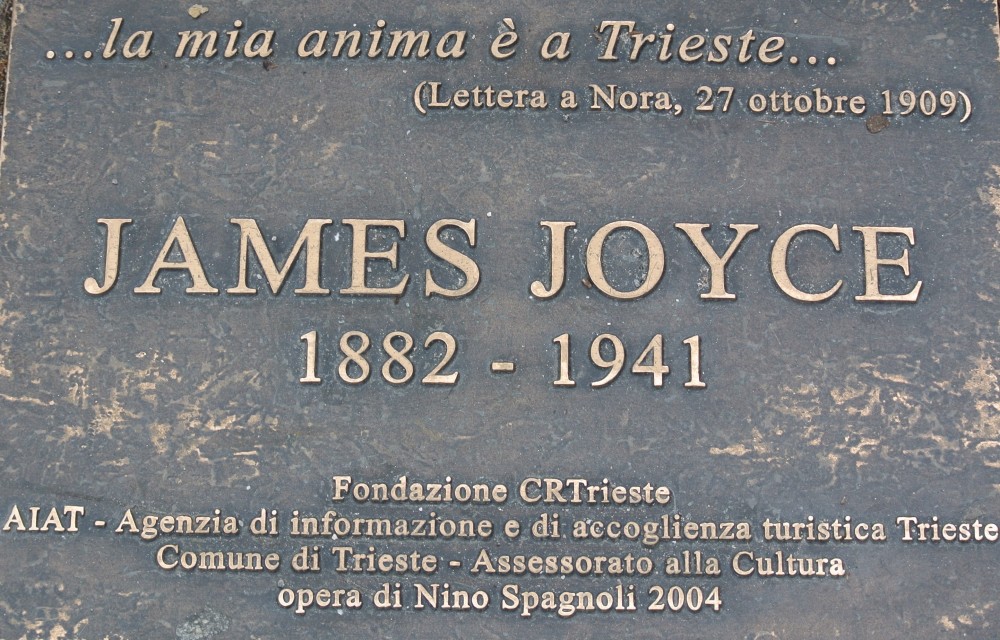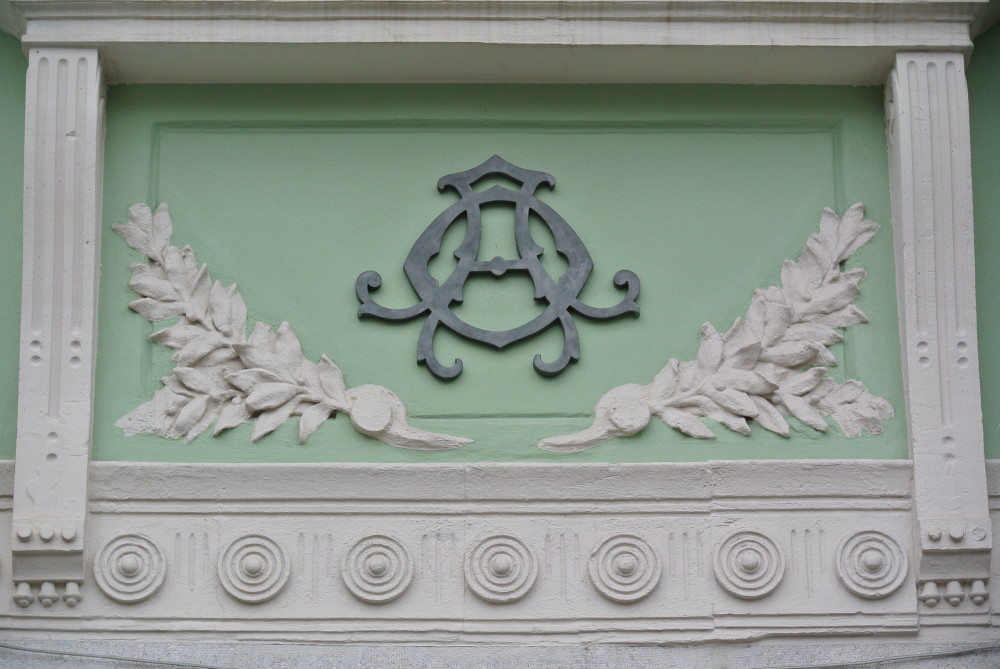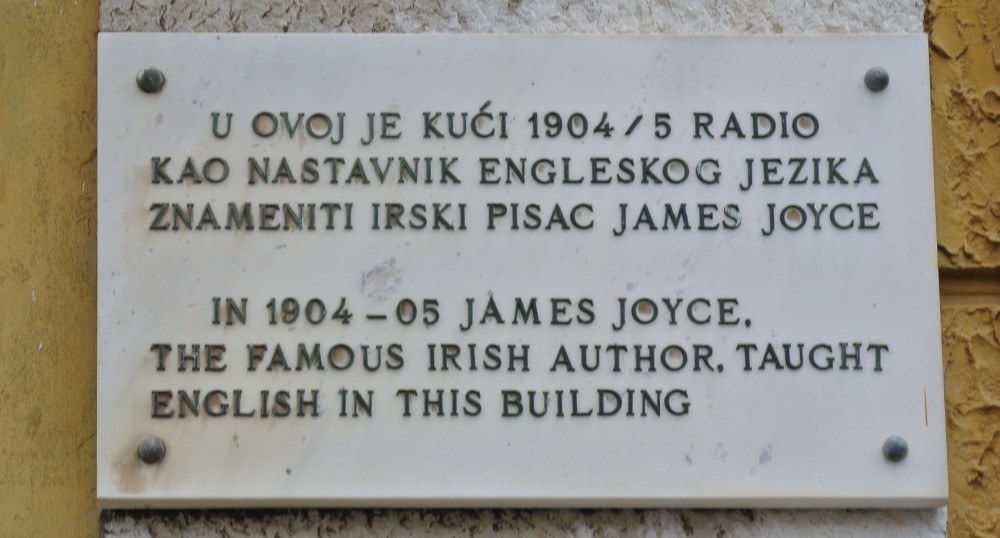It’s a strange hemmed-in corner of the world, north of the Istrian peninsula and east of Venice. For any well-read Irishman, Trieste is associated with James Joyce, who spent the years 1905-1914 there, writing Dubliners (1914), A Portrait of the Artist as a Young Man (1916), Exiles (1918) and the early drafts of Ulysses (1922). I’d read about Trieste in countless books before I got around to visiting the place in October last year. Italo Svevo is its homegrown novelist and Umberto Saba one of the top three Italian poets of the twentieth century. Both writers celebrate Trieste’s cultural and sexual landscape as a port city at the edge of other peoples’ empires: Roman, Austro-Hungarian, Slavic, with a Jewish admixture. This was perhaps what the Dubliner Joyce saw in it too. All three writers found Trieste a lustful place.
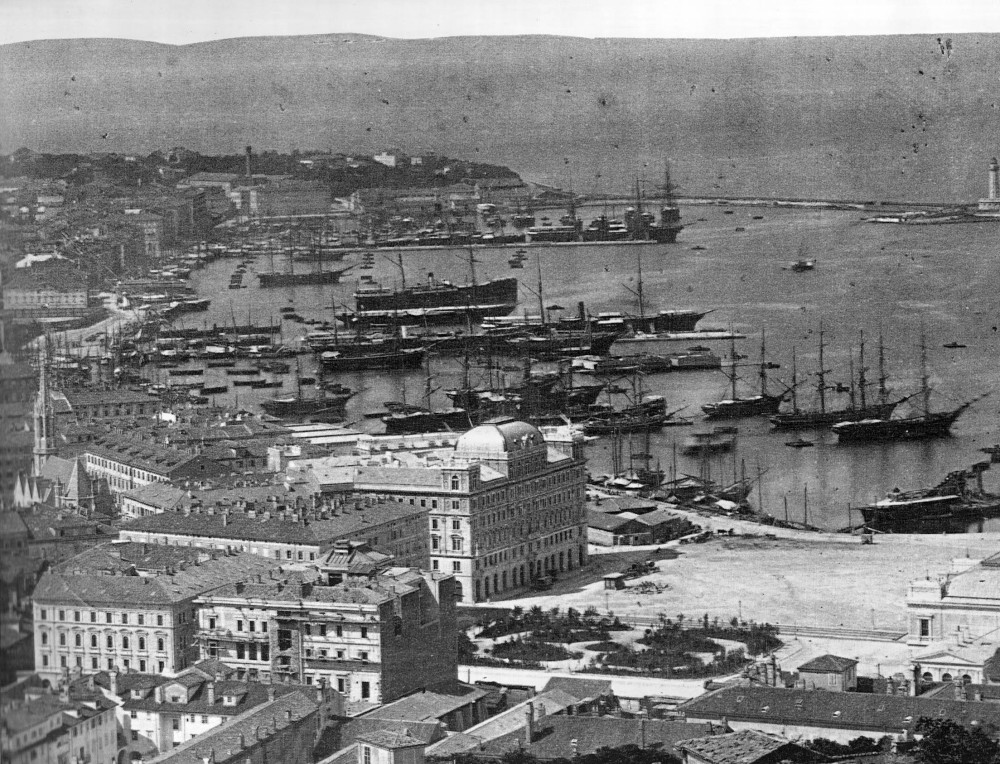
The port of Trieste in 1885
Umberto Saba in Ernesto (1975), an unfinished novel about growing up in Trieste, describes the city at the turn into the twentieth century:
The city was spreading in all directions: old, shabby houses which Ernesto remembered from his childhood walks and had always assumed would stand forever, were being knocked down for new building. A factory chimney poured out thick smoke, blackening the surrounding air, and workers were already streaming out of the factories, their food boxes under their arms. All comrades, all socialists, thought Ernesto, wanting to be one of them.
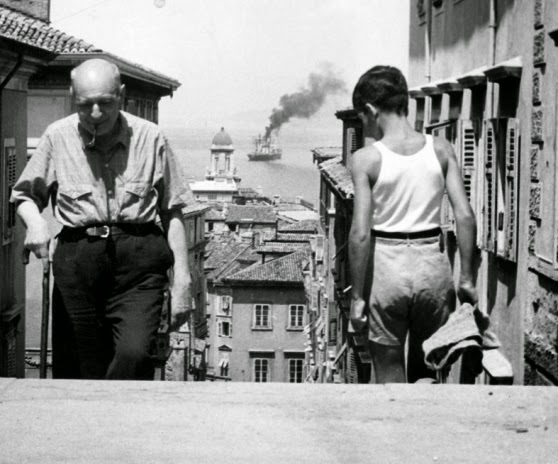
Umberto Saba climbing the steps of the via Ciamician in Trieste, 1953 (Montadori)
Saba’s Ernesto is an account of a sixteen-year-old’s sexual awakening, at first with a labourer, then with a port prostitute. Ernesto has good Italian and handles the business correspondence, working in a depot as a clerk. He supervises the unloading of flour sacks by the stevedore who awakens him. Saba’s description of their sexual relationship is tender but realistic, a recollection of an encounter in his own youth. It is a meeting of classes, of cultural and ethnic backgrounds, as much as an account of lust. “He heard the man softly asking him to shift position, and did so as if it was an order. All at once he thought I’m lost, but there was no regret, no wish to turn back.”
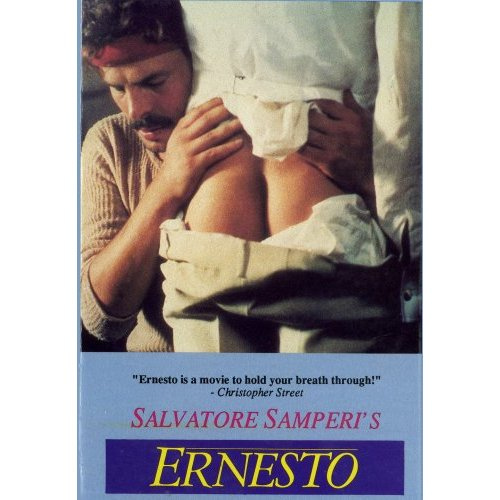
Salvatore Samperi’s 1980 production of Ernesto
What Saba captures so well is Mediterranean lust. The coupling takes place during the long southern lunch hour. Drays are tethered, the sound of cutlery tinkles from open windows. Saba’s sex in the afternoon occurs on flour bags piled high, one of which gets stained over and over. The author understands the peculiar boredom of old-style office drudgery: scrivening before computers jazzed it up. The nameless stevedore has a kind of Oliver Reed earthiness, reminding me of Lady Chatterly’s Lover and The Go Between. A modern sensibility would see Ernesto as a story about power and exploitation, but that would be to miss the point. The lover is a rapidly ageing labourer on daily hire, rough-hewn but with the gentleness of the old inverts, the sexual outsiders: a working class queer.
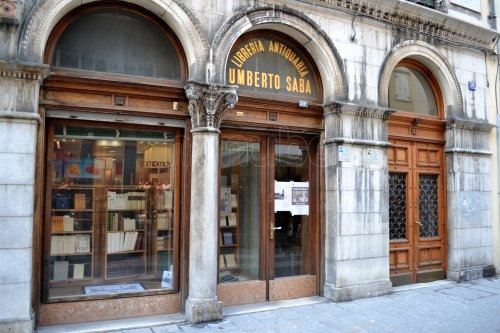
When Saba wasn’t writing, he ran an antiquarian bookshop in Trieste, which can be visited on Via S. Nicolò. He was a poet from a part-Jewish background. Songbook: The Selected Poems of Umberto Saba (2008) sprinkles poems about boys among those about women and place. Together with Ungaretti and Montale, Saba is counted among the twentieth century’s greatest Italian poets.
Before the First World War Trieste had a complicated ethnic, linguistic and national mix. Italian was the language of the intelligentsia. Slavs (Slovenes) had their own newspaper, cafés and theatres. The German of Vienna was associated with officialdom and the upper echelons. There was a sizeable Jewish community. Saba describes the Caffè del Tergesteo, still doing business, frequented by Joyce and Svevo:
It was a rather genteel cafe, popular with rich businessmen, nearly all of them old men and some from faraway Turkey, wearing red fez hats like the people in The Arabian Nights.

Italo Svevo (Aron Ettore Schmitz, 1861-1928), like Saba, issued from Trieste’s Jewish community. His name literally means “Italian Swabian”, testifying to the cosmopolitan Triestine culture he brought to life in his novels. It was Joyce who championed him and who re-discovered his talents as a writer. In As a Man Grows Older (1898) we are in the doldrums of middle age, among boulevardiers chasing infidelities in a seaside town. Svevo describes the port of Trieste in all its turn-of-the-century glory:
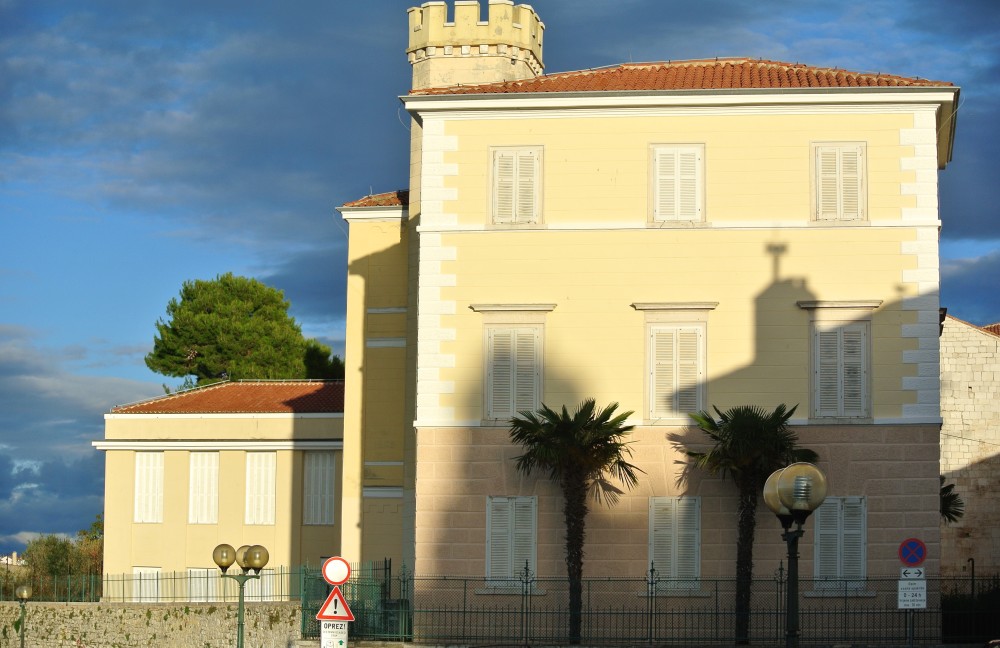
Afternoon light at Poreč on the Istrian peninsula. © Padraig Rooney
He looked at his watch and stood for a while on the sea-front. The weather seemed worse here than it did in the town. The tremendous clamour of the sea, joined to the howling of the wind, made one vast uproar composed of many voices small and great. The night was dark; nothing could be seen of the sea but the white crest of a wave here and there, which had burst asunder before it could hurl itself against the shore. They were keeping watch on the boats anchored along the quay, and here and there he could see the figure of a sailor working in darkness and danger up aloft on the masts which were keeping up their ritual dance towards all the four winds in turn.
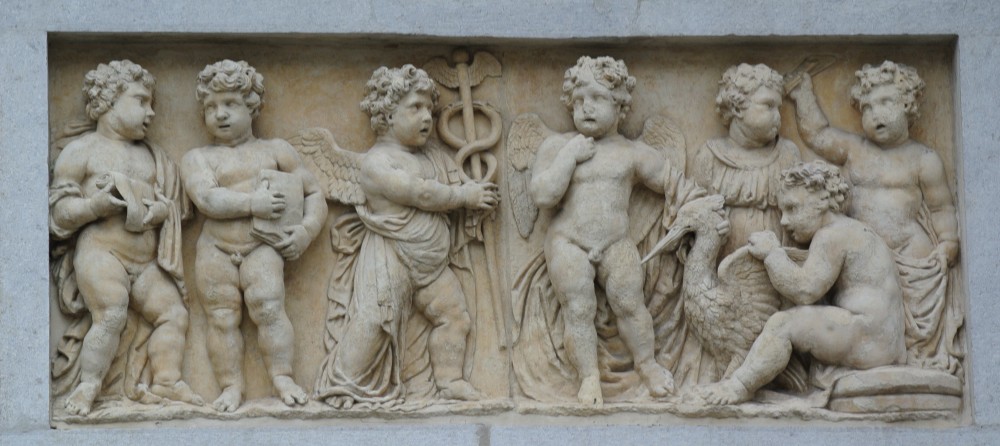
Putti on a Roman frieze, Trieste. © Padraig Rooney
A few days in Trieste brings us face to face with the remnants of the city’s various masters: Roman, Austrian and Slav. Mussolini’s Fascist-era torsos, dating from 1934 (Anno XII), decorate the old Maritime Air Station building in the docks. In the following year Italy would invade Ethiopia and its pretensions to imperial power would take a battering thereafter. Restaurants in Trieste have more of a Hungarian flavour than Italian – no panna cotta but serving up wonderful apfelstrudel.
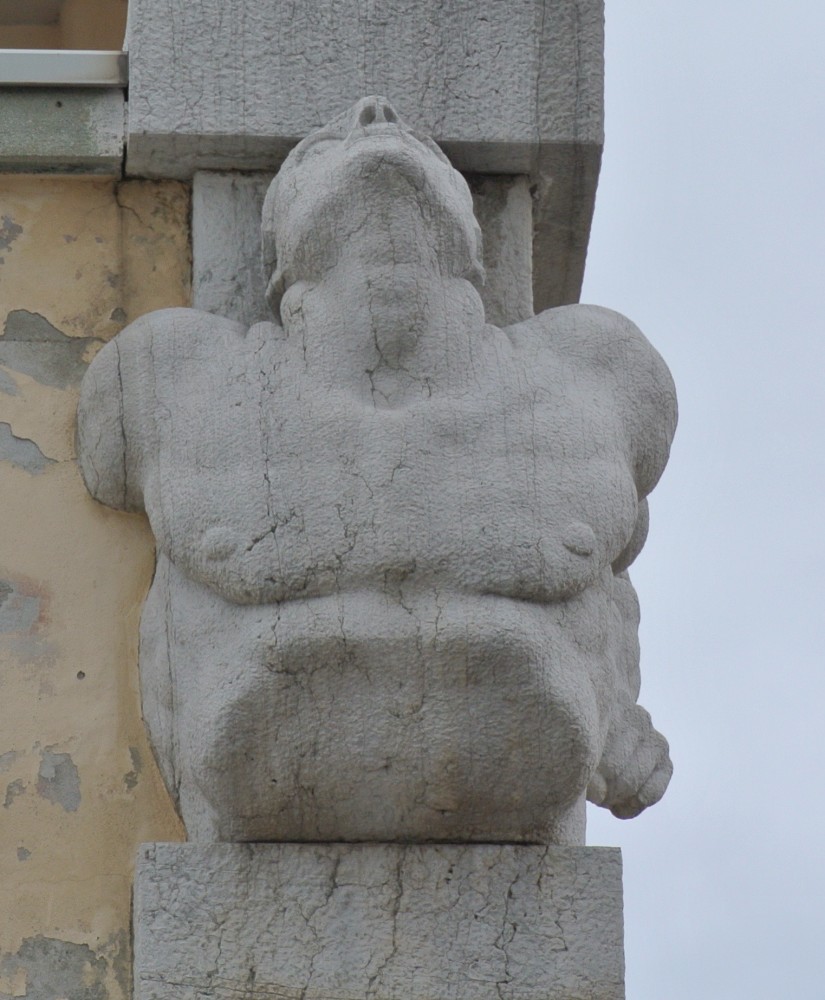
Fascist-era torso on the Maritime Air Station building, Trieste. © Padraig Rooney
At Buffet di Pepi I sampled their signature dish of pork cooked four ways: tongue, fillet, sausage and bacon, served with mustard, sauerkraut and bread. It’s a choucroute in all but name. While I ate outside on the terrace, I was accosted by beggars and panhandlers. I looked at the architecture: imperial, jumped-up, full of its own importance, the buildings of insurance companies and shipping magnates.
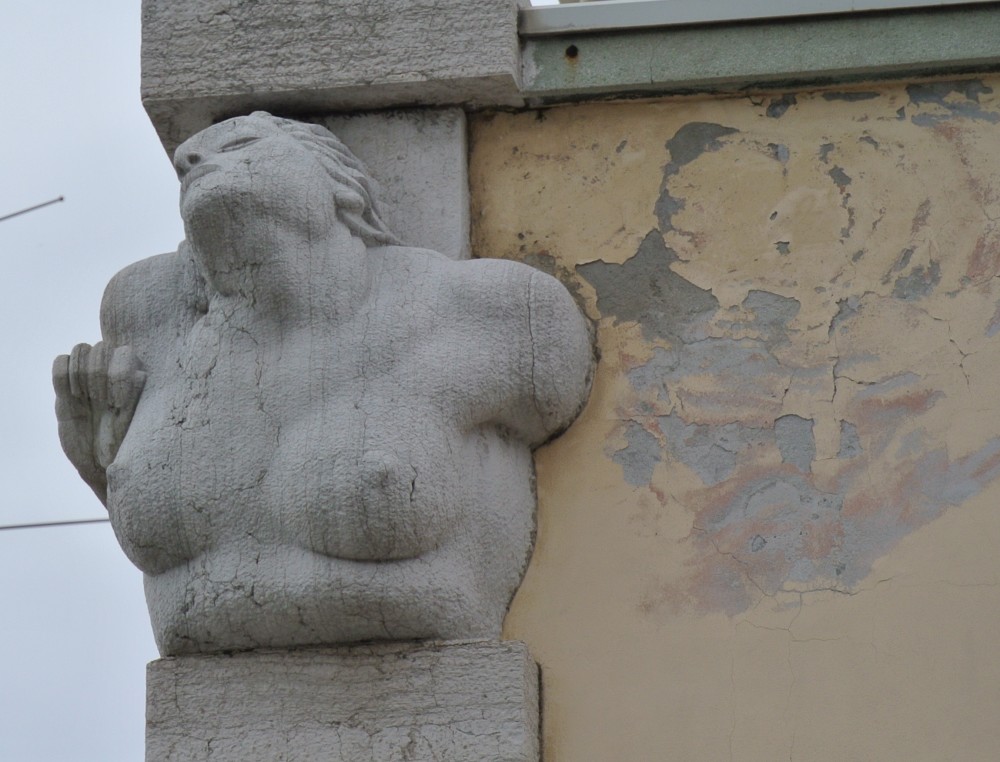
Holding it all up on the Maritime Air Station building, Trieste. © Padraig Rooney
The Istrian Peninsula is proud of its Joycean connection. The Irish writer has a museum in Trieste. A statue has been erected on the Via Roma where it crosses the Canal Grande, and there is a city tour of Joyce’s stations of the cross: where he taught, the many temporary lodgings, the locations of his nighttime roistering. In Largo Barriera Vecchio you can find the old Pasticceria Pirona where the writer apparently had his coffee and pastry and whatever else you’re having.
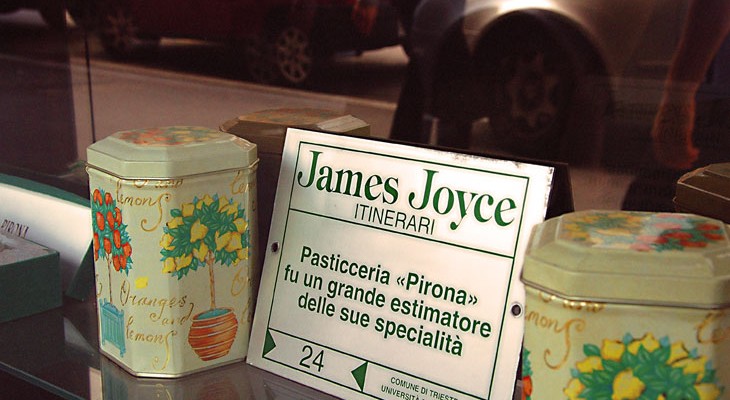
Proud of its Joyce connection: the Caffe Pirona in Trieste. Photo Maurizio Valdemarin
At the time of Joyce’s stay, Trieste had a lively red-light district, as befits a port city, and Joyce was no stranger to the charms of the dark bordellos of the Jewish district and the Città Vecchia. There were between forty and forty-five whorehouses in the city. The aptly named Via della Sanità (now via Armando Diaz), where the Joyce family lived for a time, was the entrance to the red-light district in the area known as Cavana. Jan Morris in Trieste and the Meaning of Nowhere has further details:
James Joyce is said to have been an assiduous drunken frequenter of the Trieste whore-houses, allegedly preferring La Chiave d’Oro, the Golden Key, or the poky Il Metro Cubo, the Cubic Metre … How strange it is, nevertheless, that the man who wrote “Watching the Needleboats at San Sabba” in the daytime could stagger sozzled from pub to prostitute at night! Joyce adored his children and loved his wife after his fashion, yet apparently he still felt the need to wander, night after night, down the via del Solitaire to the House of the Golden Key.

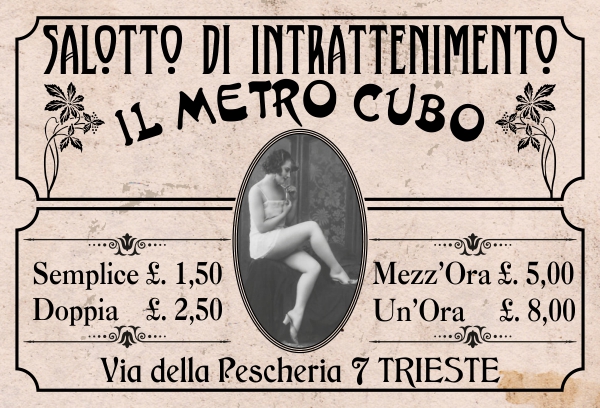
Tickets for the bordellos in Trieste.
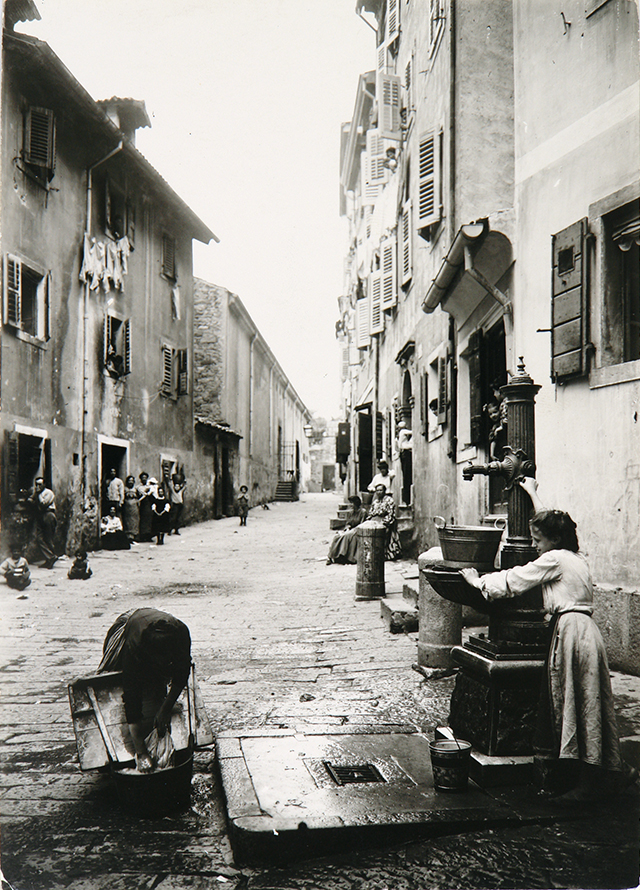
Cavana district in Trieste
Further down the Istrian coast at Pola (in present-day Croatia,) where Joyce taught for a time, there is a smoke-filled Joyce pub. Joyce’s connection with Istria seems to me to come to the fore in a number of poems published in Pomes Penyeach (1927), especially in “On the Beach at Fontana”, written in Trieste in 1914 on the eve of war, about his son Giorgio:
From whining wind and colder / Grey sea I wrap him warm / And touch his trembling fineboned shoulder / And boyish arm.
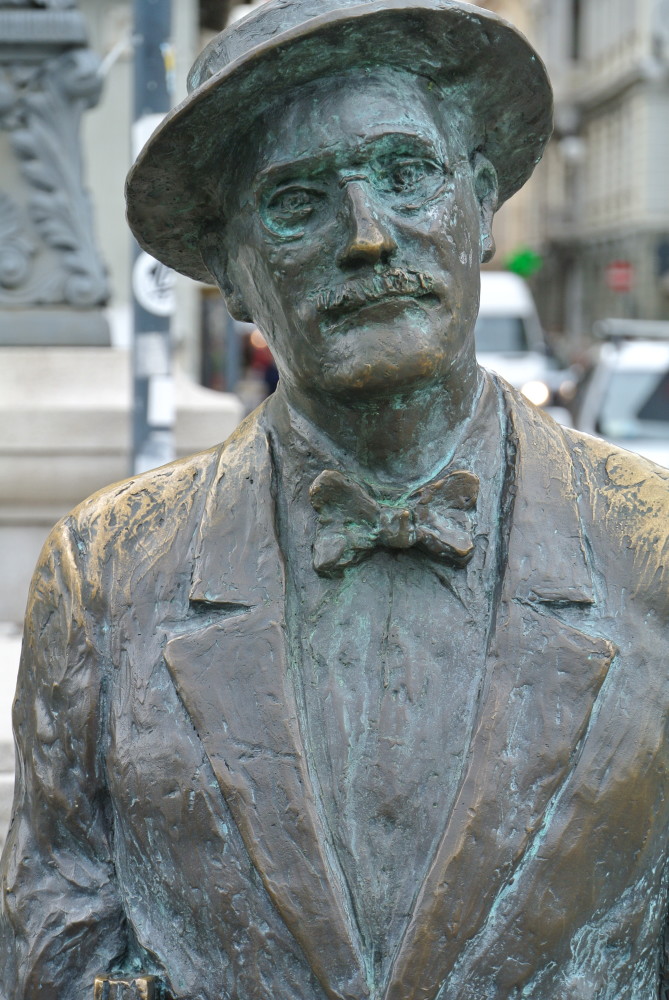
Statue of James Joyce in Trieste. © Padraig Rooney
Joyce and his wife Nora had mixed views about Trieste and he tended to see it as a backwater:
Trieste is the rudest place I have ever been in. It is hardly possible to exaggerate the incivility of the people. The girls and women are so rude to Nora that she is afraid to go out in the street. Nora can speak about thirty words of Triestine dialect…The Trieste people are great ‘stylists’ in dress, often starving themselves in order to be able to flaunt good dresses on the pier.
Plaque in Pola (Pulja), where Joyce and Nora first decamped after an abortive stay in Zurich.
The Church of the Holy Trinity Thaumaturge in Trieste is where Joyce used sometimes to follow the Greek Orthodox service. It sits four-square in the form of a Greek cross, crowned with a large dome, where the Canal Grande has been filled in to form the Piazza Sant’Antonio Nuovo. Joyce writes in his letters:
The Greek mass is strange. The altar is not visible but at times the priest opens the gates and shows himself. He opens and shuts them about six times. For the Gospel he comes out of a side gate and comes down into the chapel and reads out of a book. For the elevation he does the same. At the end when he has blessed the people he shuts the gates: a boy comes running down the side of the chapel with a large tray full of little lumps of bread.
The church is now the place of worship for the Serbian Orthodox congregation in Trieste. There was a notice at the entrance about switching off phones. Inside, an old, stooped lady, a bit unsteady on her pins, approached the lit candles in front of the iconostasis with her slim yellow taper. Then her phone rang in her handbag, echoing under the dome, and she had to return to her place, all the time hoking in her bag for her phone. She held it in one hand and the lit taper in the other, dripping wax all over the carpet. Her interrupted piety was comical. It could have been a scene from a Samuel Beckett play.

Church of the Holy Trinity / Saint Spyridon Serbian Orthodox Church, Trieste. Photo A. Ocram
Jan Morris describes “the sweet tristesse that is onomatopoeic to the place” in her excellent travel account, Trieste and the Meaning of Nowhere. She recalls coming ashore as a young soldier at the end of the Second World War. In the chapter entitled Love and Lust she writes: “Certainly I sometimes think that transient love, the sort that is embodied in a one-night passion, or even a passing glance, is no less real than the lifelong sort. Even imagined love is true!” Our three Triestine writers would certainly concur with her there.
